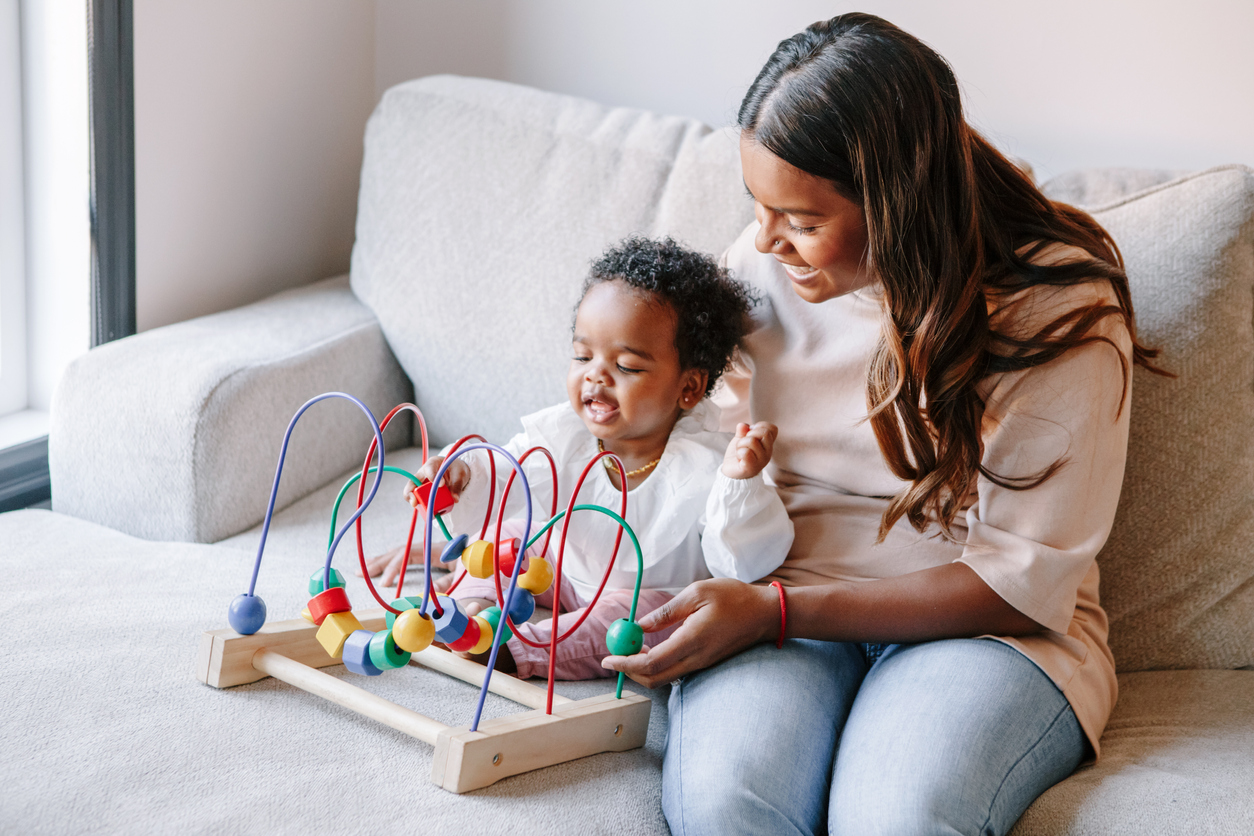Many children with autism have poorly developed or limited play skill repertoires (Center for Disease Control and Prevention, 2022). If these play skills are not taught at an early age, the development of important social skills, like game play or good sportsmanship, which a child will need to make and maintain friends, will also be impacted later in life.
Child-directed interaction, which is a part of PCIT or Parent Child Interaction Therapy, provides parents with a few easy strategies to increase play skills in young children with autism and other developmental disabilities (McNeil, 2010).
By using these simple strategies, you can start to increase and build your child’s appropriate play skills today!
8 Tips for Developing Play Skills
- Praise
Praise your child for any appropriate play or social skills. As your child is engaging with toys, items, or activities provide as many praise statements as you can about what they are doing well.
-
-
- “You are sitting so nicely!”
- “Wow, I love how you are stacking those blocks!”
- “Look at you jump high, so cool!”
-
By providing specific attention to appropriate play behaviors, your child will be more likely to do those again in the future.
- Repeat
Repeat any sounds, words, or sentences your child says during their play. For younger children who don’t have much language yet, this may look like reflecting babbling back to your child (e.g., “bababa”). For older children, speech reflection will look more like repeating their words and expanding upon them.
To illustrate, if your child says, “Mom I made a tower!” Then, your reflection back could be, “you did make a tower! It is so tall!”
By reflecting speech, this will increase your child’s language and communication skills and show your child that you are listening to what they say. We want them to know that their words are important to us, no matter how long or short!
- Imitate
Imitate any actions your child does during play. If your child enjoys stacking blocks, you should stack blocks, as well as comment on what you are both doing. You could say, “I’m going to stack the blocks just like you!” By imitating their actions, you can demonstrate close attention to their actions and show your approval of their play.

- Model
Model new actions that your child may have never demonstrated in the past. If your child has only ever lined up cars in a row, model how they can drive, fly, or crash them too, while narrating what you are doing with the toy – “Woah, my car is flying so fast, zooommmm.”
- Describe
Describe all appropriate behaviors and actions that your child does during play. If you are really describing your child’s actions, you should feel like a sportscaster. If you and your child are playing with dinosaurs, your descriptions of their play might sound something like this: “Your dinosaur is running. Stomp, stomp, stomp. Oh no, now he is trying to catch me. Ahhhh! Don’t get me dinosaur! Look out, here comes a T-rex too. He looks really hungry!”
Every action or script your child could say to narrate his/her play actions should be said aloud to serve as a model of appropriate play language!
- Be Enthusiastic
As you are engaging with your child, show them how fun it is to play! Use excited inflections and smile at your child while you are playing. You can also laugh if they do something funny as well as provide physical touch throughout play too (e.g., give rubs on back or hug your child). The more fun you have, the more likely they will be to continue playing!

- Offer
Offer new toys frequently. As you play, be a giver of toys and attempt to model and provide access to as many items as possible. This will be especially helpful if your child has limited interests. By offering and giving access to new items, your child may begin to play with those toys as well.
- Avoid questions, commands, and criticism
This strategy can be one of the most difficult aspects of play time for you as a parent to implement, because play can feel like a great opportunity to teach new skills.
During your play time, avoid asking any questions like, “what color is that?” or “What does the pig say?” These are questions your child may not know how to answer and can change play time into learning time.
Also, refrain from telling your child how they should play. For example, “You need to stack the blocks like me.” During play time, let your child take the lead and decide how they want to play with the toys available.
Finally, avoid any criticism of their play. “Cars don’t line up, they race” or “We don’t roll blocks, we stack them.” Spend this time building your child up and providing only positive statements about their play activities!
If your child displays any challenging behaviors, like throwing toys, keep a neutral facial expression. Wait for the behavior to cease and provide praise for any appropriate behaviors that occur afterwards.
We know your days can be extremely busy but try to set aside 10-15 minutes daily to play with your child using the strategies above. Remember to have fun and let your kiddos take the lead!
Citations
Center for Disease Control and Prevention (2022). Signs and Symptoms of Autism Spectrum Disorder. U.S. Department of Health and Human Services. https://www.cdc.gov/ncbddd/autism/signs.html
McNeil, C. B., Hembree-Kigin, T. L., & Anhalt, K., Bjørseth, Å., Borrego, J., Chen, Y.-C., Diamond, G., Foley, K. P., Goldfine, M. E., Herschell, A. D., Masse, J., Tempel, A. B., Tiano, J., Wagner, S., Ware, L. M., & Wormdal, A. K. (Collaborators). (2010). Parent–child interaction therapy (2nd ed.). Springer Science + Business Media. https://doi.org/10.1007/978-0-387-88639-8
MeBe ABA Services
To learn more about ABA therapy, watch the MeBe ABA: 101 video series, available in English and Spanish.
If you’re ready to learn more about Applied Behavior Analysis, Speech and Language Pathology, Occupational Therapy, or Feeding Therapy services at MeBe, contact us today.
For helpful tips from the MeBe therapy team, check out @mebefamily on Instagram and Facebook and visit the MeBe Family YouTube channel.

